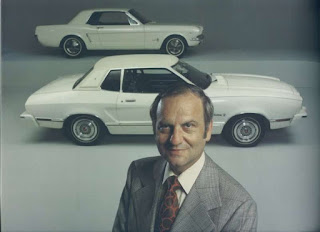For this weeks session, we were asked to analyze the Ford Pinto Case.
To summarize, company builds car, car has terrible problem, company ignores it, people die.
In 1968, then Ford president Lee Iaccoca decided that the company would not sit idly by as new Japanese competitors dominated the small car segment. He pushed the board to green light the Pinto Program and a couple of months later, the program was underway. It had impressive targets, weighing no more than 2000 pounds, priced at $2000 and a delivery deadline of just 25 months.
I guess it's too good to be true for Ford. A problem was quickly discovered in the fuel tank design. The fuel tank, positioned behind the rear axle and in front of the rear bumper would tear away and spill fuel beneath the car. Also, the tank was easily punctured by bolts protruding from the differential and nearby brackets. This would create fire in seconds.
Engineering teams quickly proposed solutions such as installing tank shields or borrow a design Ford already used in it's Capri--a much safer gas tank.
Ford still pushed the Pinto into production.
According to Motherjones, by conservative estimates Pinto crashes have caused 500 burn deaths to people who would not have been seriously injured if the car had not burst into flames. The figure could be as high as 900.
So who is to blame for all these?
Safety Engineers were apprehensive to tell Ford President Lee Iacocca about the flaws in the design as they knew it wouldn't matter. If anyone would mention it to Iaccoca according to a Ford Safety Engineer "That person would have been fired. Safety wasn't a popular subject around Ford in those days. With Lee it was taboo. Whenever a problem was raised that meant a delay on the Pinto, Lee would chomp on his cigar, look out the window and say 'Read the product objectives and get back to work.'"
Why did Lee Ioccoca allow the
Ford Pinto to be released? Iacocca was in a hurry. He wanted the car in showrooms for the 1971
model year. That meant one of the shortest production planning periods in
modern automotive history: just 25 months, when the normal time span was 43
months. That also meant that the Pinto's tooling was developed at
the same time as product development. So, it was later alleged, when Ford
engineers found a serious defect in the gasoline tank, it was too late. The
tooling process was well under way.
With all that death's over his head, how could he set aside all that guilt?



No comments:
Post a Comment